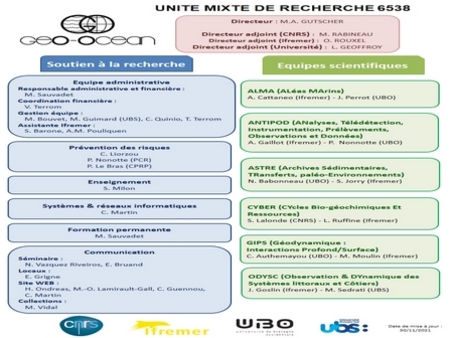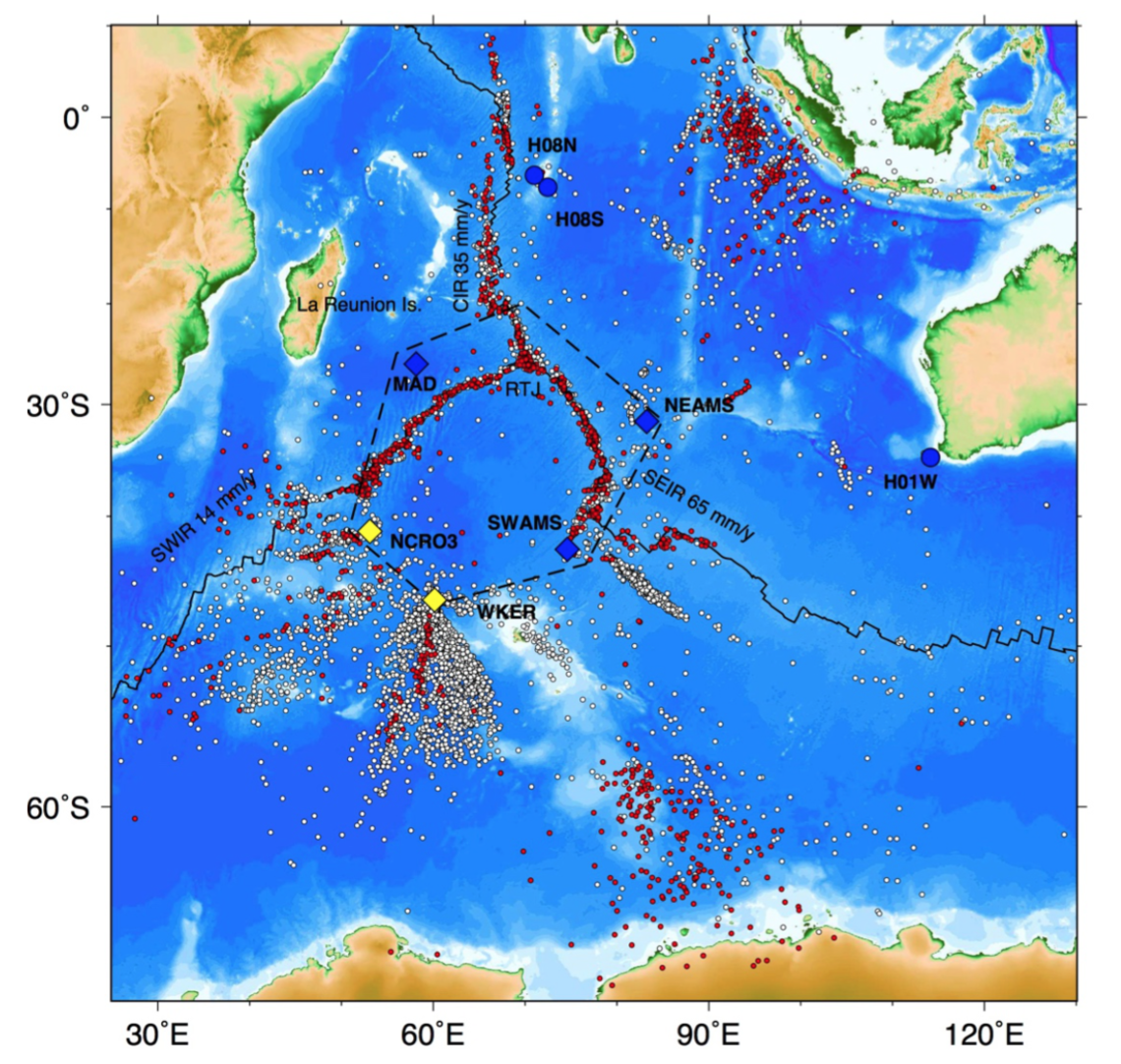OHA-SIS-BIO in the Indian Ocean
OHA-SIS-BIO – Observatory of HydroAcousticity from SISmicity and BIOIdiversity in the Indian Ocean – is a long-term hydroacoustic programme monitoring seismic activity and the vocal behaviour of large marine mammals in the southern Indian Ocean. A network of autonomous hydrophones (9 moorings, 10 hydrophones) has been deployed and maintained on an annual basis since 2010 between La Réunion, Crozet, Kerguelen and Amsterdam islands, benefiting from the annual campaign of R/V Marion Dufresne to these southern islands.
The initial objectives were:
- To monitor the earthquake activity associated with 3 contrasting spreading ridges (15 to 70 mm/year) and intraplate deformation in the southern Central Indian Basin;
- To monitor the behaviour of large marine mammals, particularly whales, in the Southern Ocean through acoustic monitoring over several annual cycles.
Three new objectives have since been added to the programme.
The data acquired to date has revealed unexpected information on sea-state noise (microseismic noise) and Antarctic ice-sheet discharge into the Southern Ocean.
This data will be used to validate sea-state prediction models or to estimate the importance of climate change on Antarctic ice sheets. Our network provides several sites to optimize P-wave detection from teleseism events at great distances. The P-waves are converted into acoustic waves directly above the hydrophones; these rapid arrival times make it possible to constrain global tomography models.
Figure opposite: Localisation of acoustic events from hydrophones of the OHASISBIO network (blue and yellow diamonds) between January 2012 and January 2013 (~ 8000; Tsang-Hin-Sun et al., 2016). Localisation by 4 or more hydrophones (red dots) and 3 hydrophones (white dots).


